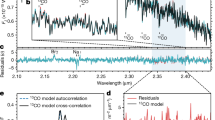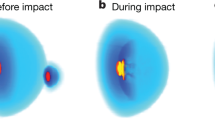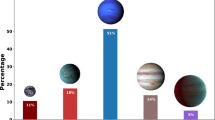Summary.
The exploration of Jupiter, the closest and biggest giant planet, has provided key information about the origin and evolution of the outer Solar system. Our knowledge has strongly benefited from the Voyager and Galileo space missions. We now have a good understanding of Jupiter's thermal structure, chemical composition and magnetospheric environment.
There is still debate about the nature of the heating source responsible for the high thermospheric temperatures (precipitating particles and/or gravity waves). The measurement of elemental abundance ratios (C/H, N/H, S/H) gives strong support to the “nucleation” formation model, according to which giant planets formed from the accretion of an initial core and the collapse of the surrounding gaseous protosolar nebula. The D/H and \(^3\)He/\(^4\)He ratios are found to be representative of their protosolar value. The helium abundance, in contrast, appears to be slightly depleted in the outer envelope with respect to the protosolar value; this departure is interpreted as an evolutionary effect, due to the condensation of helium droplets in the liquid hydrogen ocean inside Jupiter's interior.
The cloud structure of Jupiter, characterized by the belt-zone system, is globally understood; also present are specific features like regions of strong infrared radiation (“hot spots”), colder regions (“white ovals”) and the Great Red Spot (GRS). Clouds were surprisingly absent at the hot spot corresponding to the Galileo probe entry site, and the water abundance measured there was strongly depleted with respect to the solar O/H value. This probably implies that hot spots are dry, cloud-free regions of subsidence, while “normal” air, rich in condensibles, is transported upward by convective motions. As a result, the Jovian meteorology, still based on Halley-type cells, seems to be much more complex than a simple zone-belt system. The nature of the GRS, a giant anticyclonic storm, colder and higher than its environment, has been confirmed by the Galileo observations, but its internal structure appears to be very complex.
Strong winds, probably driven by the Jovian internal source, were measured at deep tropospheric levels. The troposphere might be statically stable at pressures higher than 18 bars, but the extent of this putative radiative layer is still unknown.
Similar content being viewed by others
Author information
Authors and Affiliations
Additional information
Received 23 November 1998
Rights and permissions
About this article
Cite this article
Encrenaz, T. The planet Jupiter. The Astron Astrophys Rev 9, 171–219 (1999). https://doi.org/10.1007/s001590050017
Issue Date:
DOI: https://doi.org/10.1007/s001590050017




